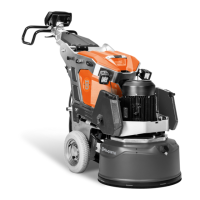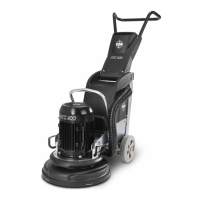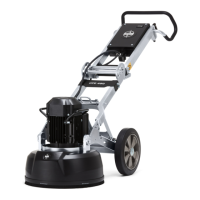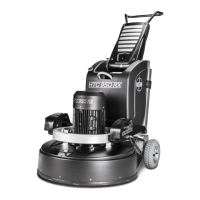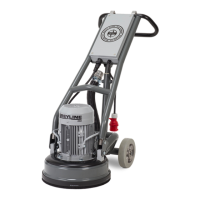What should I do if the cooling flange for the frequency converter is overheated on my HTC DURATIQ T5?
- BBobby HarrellSep 7, 2025
If the cooling flange for the frequency converter is overheated on your HTC Floor Machine, let the frequency converter cool down.


